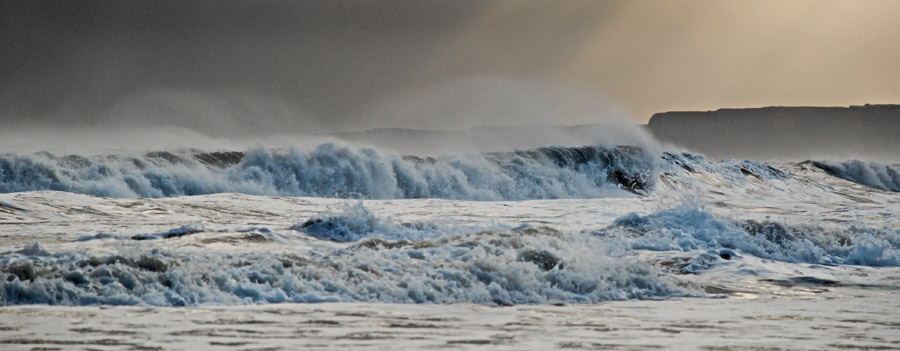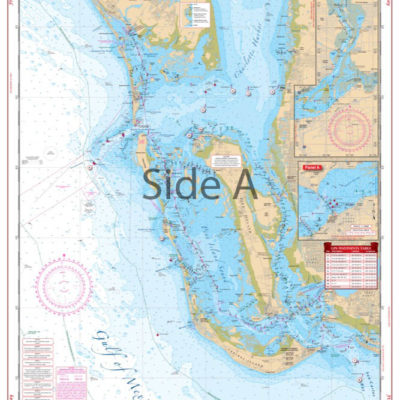When you need to know approximately how much water is below your boat at a particular time of day, in a particular place, and you have access to the tide tables, the "Rule of Twelfths" will serve you well. It's an easy-to- use guide for "semi-diurnal" tides, which means there are two nearly identical complete tidal cycles a day (high, low, high, low, all within approximately 24 hours).
Basically, it takes about six hours for this tide to completely rise (flood) or fall (ebb). The "slack" period (when the tide is reversing directions) varies in duration depending upon your location, the stage of the moon, the force of the wind, and other factors. Slack tide may last only a few minutes or much longer, and doesn't necessarily correspond to the exact time of high and low tide.
The times of high and low tides, as well as tidal heights above or below chart datum (the numbers showing depths on your chart) for each day, can be determined from a number of sources, such as weather broadcasts, tide tables, navigation programs, some charts, and books such as Eldridge Tide and Pilot Book, published annually. If you're coastal cruising, keep a print version of the tide tables aboard for times when electricity and Internet connections are unavailable.
Let’s say we are anchoring in Boothbay Harbor, Maine just northeast of McFarland Island in approximately 9 feet of water. The depth showing on the chart for this area of Boothbay, 9 feet, is the chart datum which is derived from some phase of the tide. Common chart datum is lowest astronomical
tide and Mean Lower Low Water, MLLW.
Using the Tide Tables for May 14, 2017, low tide occurs at 8:03 AM and is 0.3 feet above chart datum which is 9 feet. This means we would be anchored in approximately 9.3 feet of water at 8:03 AM. High tide occurs at 2:20 PM and is 8.4 feet above chart datum which means we would be anchored in approximately 17.4 feet. The next low tide occurs at 8:08 PM and will be 1.4 feet above chart datum.
This means we will be anchored in approximately 10.4 feet.
Remembering it takes about six hours for the tide to completely rise and then about six hours for it to fall we can apply the rule of twelfths to determine what the depth of water will be for any given time between low and high tide. Initially the tide will rise and fall slowly during the first hour or two while during hours three and four, the mid stages of a rising or falling tide, the flow of water will increase considerably.
By dividing the 12 hour cycle into twelfths we can approximate the depth of water at each hour
between the known depths at high and low tide. In this example a low tide of 0.3 and a high tide of 8.4 gives us a tidal range of 8.1 feet, the difference between high and low tide heights. Dividing the tidal range, 8.1 feet in to twelfths equals .675 feet/twelfth. The tide will rise or fall one-twelfth in the first and sixth hours, two-twelfths in the second and fifth hours, and three-twelfths in the third and fourth hours.
This means we can calculate the approximate depth of water between low and high tide as follows:
Low Tide 8:03 AM 9.3 feet
9:03 AM – 9.3 feet plus 1/12 th (.675 ft.) = 9.975 feet
10:03 AM – 9.975 feet plus 2/12ths (1.35 ft.) = 11.325 feet
11:03 AM – 11.325 feet plus 3/12ths (2.025 ft.) = 13.345 feet
12:03 AM – 13.345 feet plus 3/12ths (2.025 ft.) = 15.365 feet
1:03 PM = 15.365 feet plus 2/12ths (1.35 ft.) = 16.715 feet
2:03 PM = 16.715 feet plus 1/12 th (.675 ft.) = 17.385 feet
High Tide 2:20 PM 17.400 feet
The same Rule of Twelfths would apply for the falling tide, so why is this important? In this example we are anchored out so knowing what depth of water we are in is critical to knowing how much anchor rode to pay out. A safe “Scope” (the angle of the rode in the water to permit safe holding of the anchor) would be 7:1, seven feet of rode for every one foot of depth. This means we should pay out approximately 122 feet of rode to accommodate the high tide depth.
Another useful tool for the Rule of Twelfths is knowing when you can safely cross a shallow body of water, take for example you decide to sail close to the north end of McFarland Island where at low tide the chart datum is one feet. So the depth is one foot at low tide, on this particular day, May 14 th , Mother’s Day. Now let’s say your boat has a draft of 4 feet, using the table above and knowing this area of one foot water is only a half mile or so from your anchorage you could calculate the depth of water near the north tip of McFarland Island.
The quick answer is with a 4 foot draft for your boat it would be approximately 10:30 AM before you could cross that body of water.
8:03 AM 1.3 feet
9:03 AM 1.3 feet plus 1/12th (.675 ft.) = 1.975 feet
10:03 AM 1.975 feet plus 2/12ths (1.35 ft.) = 3.350 feet
11:03 AM 3.350 feet plus 3/12ths (2.025 ft.) = 5.375 feet
Knowing how to read your chart and calculate the approximate depth at any time of your passage will ensure a safe journey and another great day on the water!!


